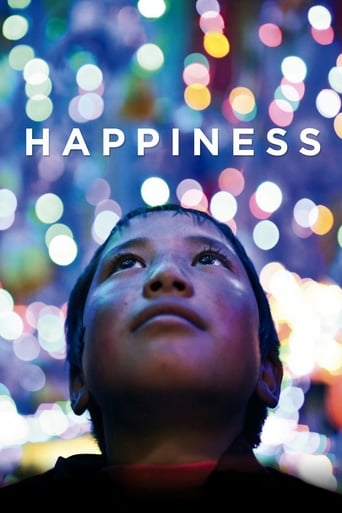

In 1999, King Jigme Wangchuck approved the use of television and Internet throughout the largely undeveloped nation of Bhutan, assuring the masses that rapid development was synonymous with the "gross national happiness" of his country, a term he himself coined. THE HIMALAYAN BOY AND THE TELEVISION SET show how Laya, a remote village buried in the Himalayas, is gradually being dug up as new cables are installed to permit the technologies to flourish.The process of change between a rural and mechanized way of life is observed through the eyes of Peyangki, an eight-year-old boy, whose mother has sent him to a monastery in the hope that he will learn a contemplative way of life and thereby become pure in spirit as well as body. Peyangki resents the decision; he is shown returning to his mother, and pleading that he might go with a family friend to visit his sister, now working in the regional capital of Thimphu. After a grueling three-day journey, Peyangki discovers just how different the modern urban way of life actually is.Thomas Balmés' film quite brilliantly captures the contrasts between different ways of life. Peyangki is accustomed to simpler ways; his mother spends her time looking after her flock of yaks, and trying to shoo him away. In the monastery - where there are only two other worshipers - he is instructed in the virtues of the contemplative way of life, but he is more interested in talking about worldly matters. The camera vividly captures the contrast between the wild, untamed mountains and the primitive mountain shack that houses the monastery, in which dim butter lamps-flicker to illuminate the Buddhist shrine.The film transforms Thimphu into a gaudy city of the mind, in which bright lights flash, cars whiz by day and night, and the thronged sidewalks drive little Peyangki almost giddy with wonder. He re- encounters his sister at night, in a place where he (and his mother) would least expect - although admiring the person-made lights, there is a trace of wistfulness in his manner, as if yearning for the less pressurized existence of his rural home.However that existence is threatened by the inevitable march of progress. In a series of brilliant shots, contrasting the red- cloaked Peyangki with the anonymous-looking workers, director Balmés suggests that progress is not quite as desirable as the King of Bhutan might have assumed; it leads to standardization as well as conformity. The film ends with a shot of Peyangki running away from the camera, his monastic cloak fluttering in the breeze, almost as if he were a small red bird; this is contrasted with a series of static shots showing a Bhutanese family watching WWF wrestling on the television, understanding not one word of the English commentary. It is left to the viewers to draw their conclusions.
... View More